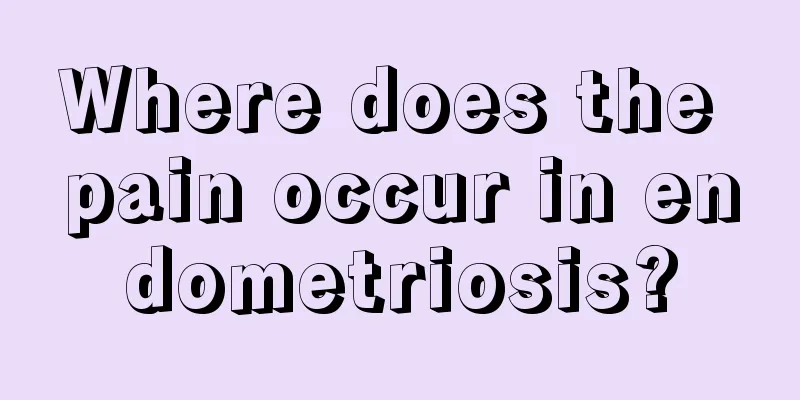Where does the pain occur in endometriosis?

|
Endometriosis is a relatively common gynecological disease. This disease often causes symptoms of dysmenorrhea, which is also a relatively common secondary dysmenorrhea. The pain in young women is mainly progressive, and the pain is mainly concentrated in the lower abdomen and lumbosacral region. In severe cases, it often radiates to the female thigh, anus, perineum and vagina. When the ectopic endometrium involves the rectouterine pouch and uterosacral ligament, there is often pain during sexual intercourse and a feeling of anal distension, especially during menstruation. In abdominal wall scar endometriosis, the abdominal wall scar will increase in size and cause severe pain during menstruation. Intestinal endometriosis is accompanied by diarrhea or constipation, and even periodic bloody stools, which can cause unbearable pain during defecation; bladder endometriosis can cause periodic frequent urination, dysuria or hematuria; rupture of ovarian chocolate cysts can cause acute abdominal pain and peritoneal irritation signs, which are similar to the symptoms of ectopic pregnancy rupture. Generally, the severity of dysmenorrhea is not affected by the length of the menstrual cycle, but since dysmenorrhea itself manifests as abdominal pain during menstruation, those with longer menstrual periods often experience longer pain duration, which is most prominent in patients with endometriosis. Except for very rare cases of malignant transformation, endometriosis is basically a benign disease, which is a phenomenon in which the endometrium spreads to areas outside the uterine cavity. Backflow of menstrual blood is a common "event" in this disease, accounting for 70% to 90% of the cases. It is a very stubborn disease. Ectopic endometrium has the same glands and stroma as the eutopic endometrium of the uterus, but it has strong cell proliferation, infiltration and recurrence, and its lesions are extensive and diverse in morphology, making it a difficult disease to treat. The lesions and symptoms caused by endometriosis are very obvious, but the pathogenesis is confusing. There is currently no clear explanation for its pathogenesis, and the treatment results are not ideal. Dysmenorrhea caused by endometriosis is very painful and requires hospital treatment. Whether it is traditional Chinese medicine or Western medicine, individualized treatment will be given according to the patient's age, symptoms, desire for pregnancy and the extent of the disease. |
<<: How to practice yoga poses to maintain ovaries
>>: How to regulate scanty menstruation during menopause?
Recommend
How is endometritis diagnosed?
If you suffer from endometritis and it is not tre...
What are the benefits of vaginal tightening?
Vaginal tightening is helpful for maintaining the...
Don’t panic if your child cries out in pain! The truth behind growing pains
Author: Mao Fei, The First Affiliated Hospital of...
What are the causes of female lower body obesity?
There are actually only a few main types of human...
How to eat black rice in the most nutritious way? Should black rice be soaked in cold water or hot water?
Black rice is a famous "blood-replenishing r...
Which side does a pregnant woman sleep on to benefit the fetus?
The sleeping position of the expectant mother dur...
What are the effects of female sterilization? These women are not suitable for sterilization!
What are the effects of female sterilization? 1. ...
Can I eat flour during menstruation?
Flour is a common food in daily life, and it can ...
What is congenital uterine malformation?
Congenital uterine malformation is a common disea...
Can I have an abortion at 7 weeks of pregnancy?
Accidental miscarriage is very common in modern l...
Endometrium 4mm amenorrhea
Menstruation is a regular shedding of the uterine...
Mugwort leaves for polycystic ovary
Polycystic ovary is caused by endocrine disorders...
How to get pregnant quickly with one fallopian tube?
Because there are problems with the fallopian tub...
Six subtle changes in women's ovulation period
In life, there are many special manifestations du...
Bleeding occurs after two or three days of menstruation
Menstruation and secretions can reflect a woman&#...









